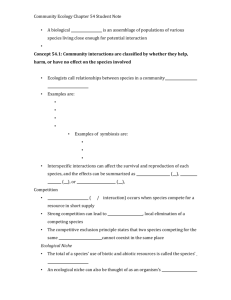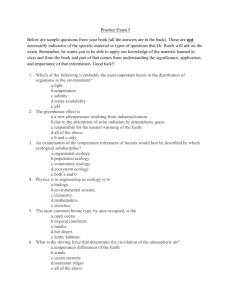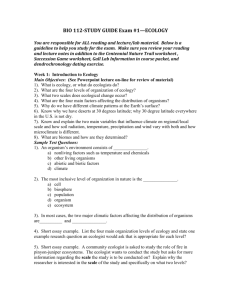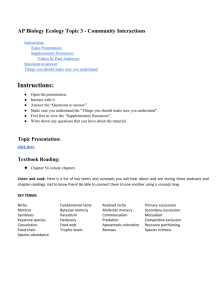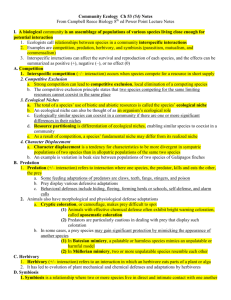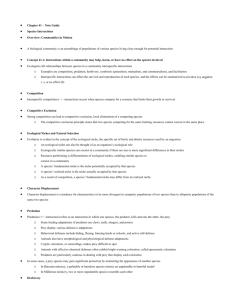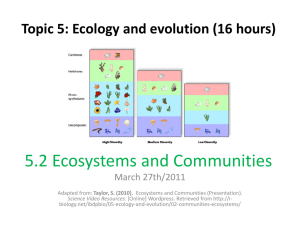Community Ecology: Species
advertisement
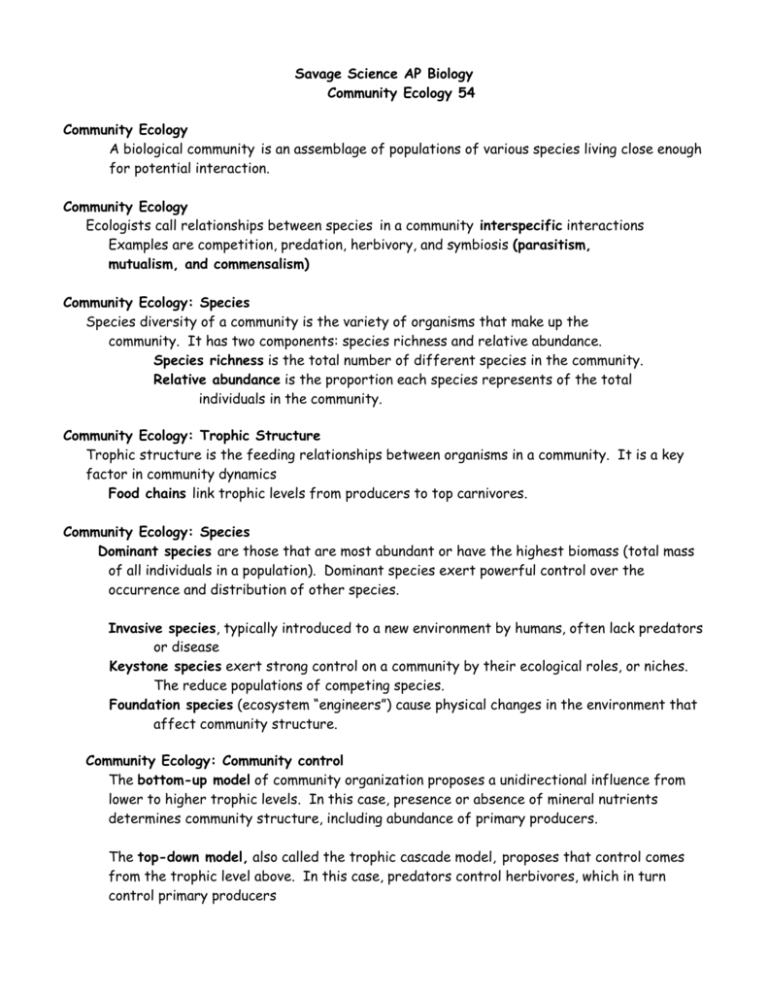
Savage Science AP Biology Community Ecology 54 Community Ecology A biological community is an assemblage of populations of various species living close enough for potential interaction. Community Ecology Ecologists call relationships between species in a community interspecific interactions Examples are competition, predation, herbivory, and symbiosis (parasitism, mutualism, and commensalism) Community Ecology: Species Species diversity of a community is the variety of organisms that make up the community. It has two components: species richness and relative abundance. Species richness is the total number of different species in the community. Relative abundance is the proportion each species represents of the total individuals in the community. Community Ecology: Trophic Structure Trophic structure is the feeding relationships between organisms in a community. It is a key factor in community dynamics Food chains link trophic levels from producers to top carnivores. Community Ecology: Species Dominant species are those that are most abundant or have the highest biomass (total mass of all individuals in a population). Dominant species exert powerful control over the occurrence and distribution of other species. Invasive species, typically introduced to a new environment by humans, often lack predators or disease Keystone species exert strong control on a community by their ecological roles, or niches. The reduce populations of competing species. Foundation species (ecosystem “engineers”) cause physical changes in the environment that affect community structure. Community Ecology: Community control The bottom-up model of community organization proposes a unidirectional influence from lower to higher trophic levels. In this case, presence or absence of mineral nutrients determines community structure, including abundance of primary producers. The top-down model, also called the trophic cascade model, proposes that control comes from the trophic level above. In this case, predators control herbivores, which in turn control primary producers Community Ecology: Disturbances A disturbance is an event that changes a community, removes organisms from it, and alters resource availability. Fire is a significant disturbance in most terrestrial ecosystems. The intermediate disturbance hypothesis suggests that moderate levels of disturbance can foster greater diversity than either high or low levels of disturbance. High levels of disturbance exclude many slow-growing species. Low levels of disturbance allow dominant species to exclude less competitive species. Community Ecology: Ecological Succession Ecological succession is the sequence of community and ecosystem changes after a disturbance. Primary succession occurs where no soil exists when succession begins. Secondary succession begins in an area where soil remains after a disturbance. Community Ecology: Biodiversity Latitude and area are two key factors that affect a community’s species diversity. Climate is likely the primary cause of the latitudinal gradient in biodiversity. The species-area curve quantifies the idea that, all other factors being equal, a larger geographic area has more species. (makes good sense) Community Ecology: Island Equilibrium Model Species richness on islands depends on the island size, distance from the mainland, immigration, and extinction. The equilibrium model of island biogeography maintains that species richness on an ecological island levels off at a dynamic equilibrium point.
